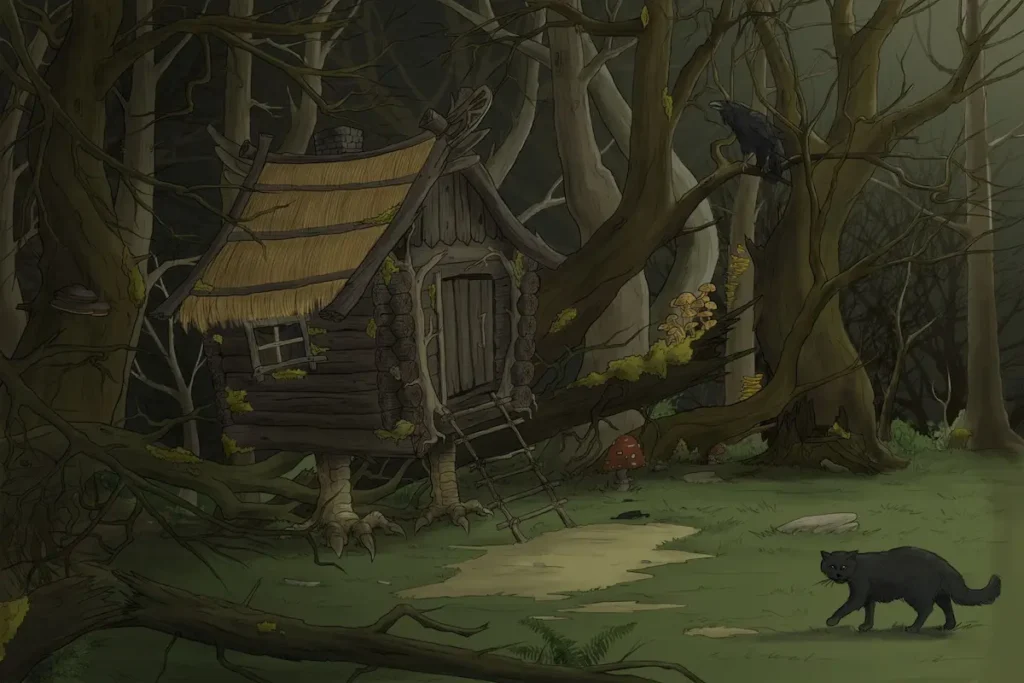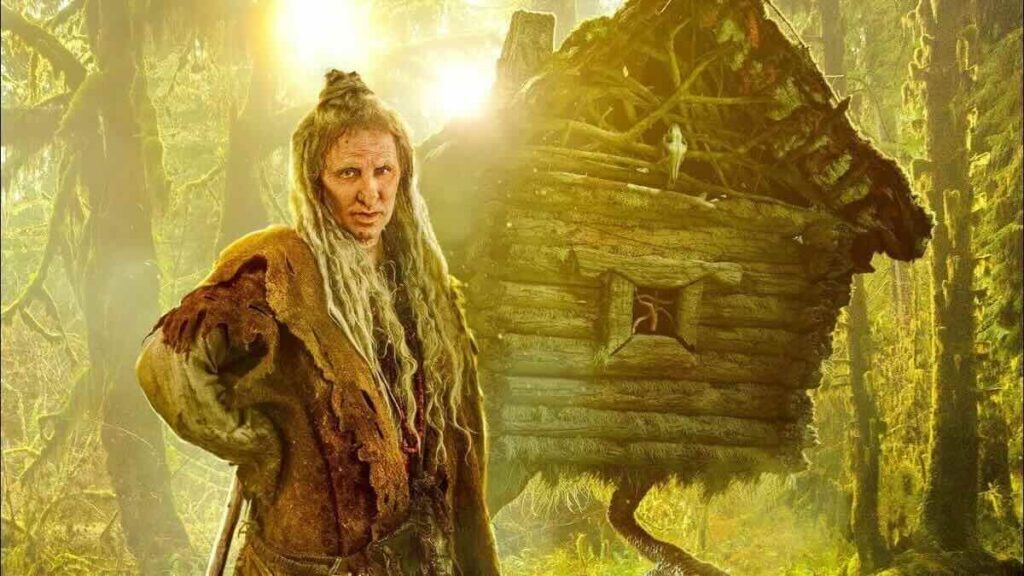Do you remember the little huts on chicken legs from Slavic fairy tales? Have you ever wondered why the hut stands on legs — and why chicken legs, of all things?
This vivid image appears in many folk tales. Usually, Baba Yaga lived in such a hut, blocking the hero’s path to his ultimate goal. Sometimes, however, she even helped the brave warrior. But where did the image of a hut on chicken legs come from?
The Symbolism of the Hut
In old fairy tales, most images had real-world prototypes. There were many huts in Russia, but some were built on stilts — especially in flood-prone areas.
This version is supported by the fact that Baba Yaga’s hut always had a stove, where she threatened to roast the hero. Stoves existed only in residential houses. Granaries, too, were often built on stilts to keep the grain dry. That’s how the idea of a hut “standing on legs” appeared.
There are other versions. In ancient times, the dead were not buried in the ground but placed in special funeral huts, also standing on posts.
Thus, Baba Yaga’s hut symbolized a passage to the other world. The prototype may well have been those burial huts with the deceased inside.
This interpretation sounds convincing, since Baba Yaga herself resembled a corpse: frightening, thin, and toothless.
A more practical version suggests that wooden posts were charred for durability, to prevent rot. They were smoked. Hence the strange expression.

Russian Fairy Tales
Folklore never comes out of nowhere. It always reflects what people saw around them. For example, legends of dragons may have arisen from volcanic eruptions. Once, even a lightning bolt was seen as the wrath of the gods. Now let’s return to the fairy tale.
Every symbol and character had a real origin, later surrounded by layers of detail. If a hut has legs, it means it can walk. Or even run.
That’s why, in fairy tales and cartoons, Baba Yaga could travel — or even chase the hero — in her own moving house. The hut became a living being, sometimes with its own personality. It turned into Baba Yaga’s loyal companion and helper.
But remember: the main villain was never the old woman herself, but Koschei the Deathless. Baba Yaga often helped the hero defeat him. Even her threats to roast Ivan in the oven had a hidden meaning of care. In ancient times, weak or sickly children were “nursed” back to health in the warmth of the stove. This is where the word “to nurture” comes from.
Such healing was the task of experienced old women, who knew what to do. In fact, the word “witch” comes from “to know” — these were wise women who could heal.
Most people treated such knowledge with suspicion, which is why these women often withdrew into the forest — into solitude, closer to healing herbs.
| The hut itself | A gateway to the world of the dead, another dimension. |
| The legs | A distinctive feature showing this is no ordinary house. |
| The chicken legs | A magical element, a spellbound object that may hold what the hero needs. |
| The stove | Ccare for the hero, hidden beneath an appearance of malie |
Usually, the hero of the tale wins Baba Yaga’s help with cleverness.
And in life, too, fairy tales remind us: if you think hard enough, you can find what you seek and discover a way out of any situation.






